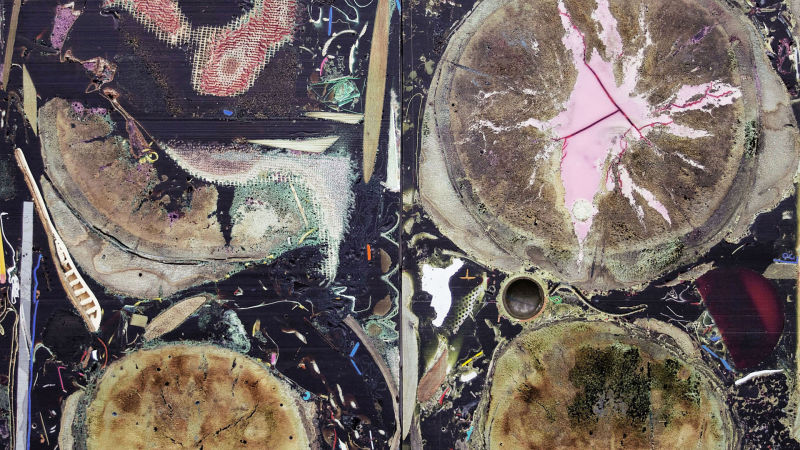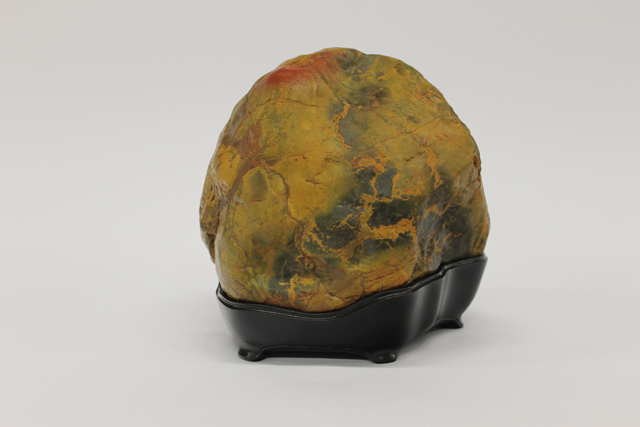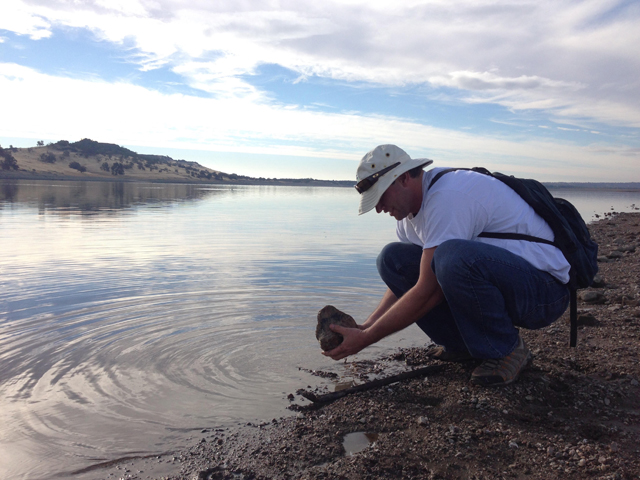No, I’m not talking about the Rolling Stones. When I say “rock show,” I mean the back corner of the Oakland Museum of California’s art galleries, hosting UNEARTHED: Found + Made, a quiet but engrossing exhibition that pairs stones found with stones made.
The found stones come to OMCA from local suiseki clubs. Following a Japanese tradition of carefully selecting, appreciating and displaying stones on carved wood platforms, or daiza, the California Suiseki Society and the San Francisco Suiseki Kai take trips to nearby rivers four to six times a year in search of “landscape stones,” microcosms of larger landscape features — waterfalls, mountains and ravines.
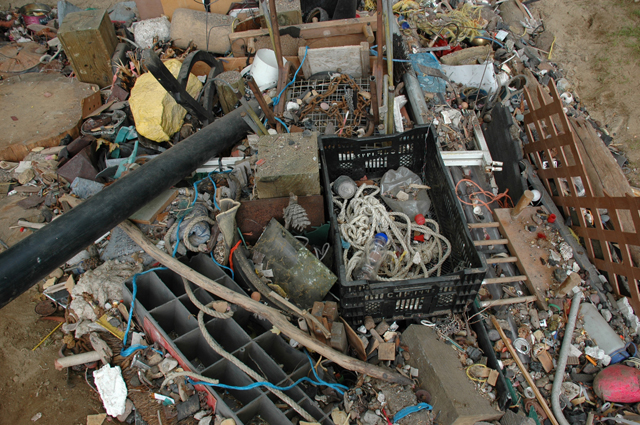
Similarly, Jedediah Caesar’s sculptures, made with collected materials and epoxy, are microcosms of the detritus of everyday life. Caesar has his epoxy blocks cut by industrial blades into Body Worlds-like slabs, revealing cross-sections of corn on the cob, electrical wires and even his own repurposed sculptures. At OMCA, these slabs are displayed as inches-thick wall-mounted rectangles and sharp-edged triangles, all cut from the same epoxy block.
Suiseki club members, depending on the rules they observe, might identify with Caesar’s process. Some societies allow for one cut, to balance or optimize a found stone. The cut stones on display in UNEARTHED closely resemble miniaturized versions of craggy peaks, volcanic islands and — in one case — Mt. Fuji. Beautifully crafted wooden daiza cradle both cut and uncut stones.
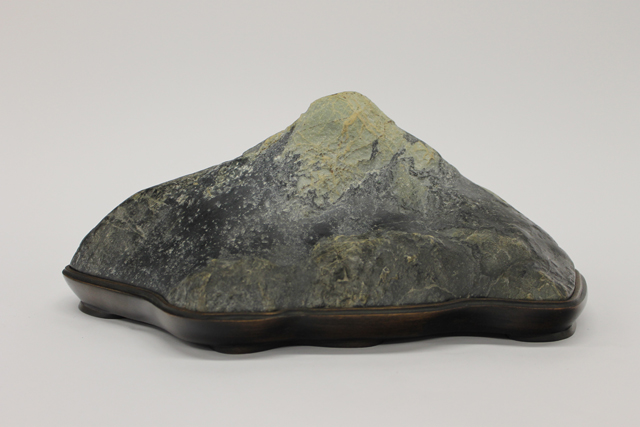
1990 Clear Creek. (Collection of Janet Roth & Mas Nakajima)
While the suiseki stones sit protected under vitrines on pedestals of varying heights, Caesar’s artworks lack any elaborate presentation methods beyond a single platform. This is for the largest object in the exhibition, which also has the longest title: One corner one cap stone/ Butyl benzyl phthalate + 4,4’ Methylene bis (phenylisocyanate)+curcuma longa (terra merita(turmeric)): (800+60)lbs and again (80+6)lbs. The sculpture is a hulking, yet squishy-looking cube of urethane and turmeric. Yes, turmeric, the common curry ingredient. I sniffed around it to no avail.
